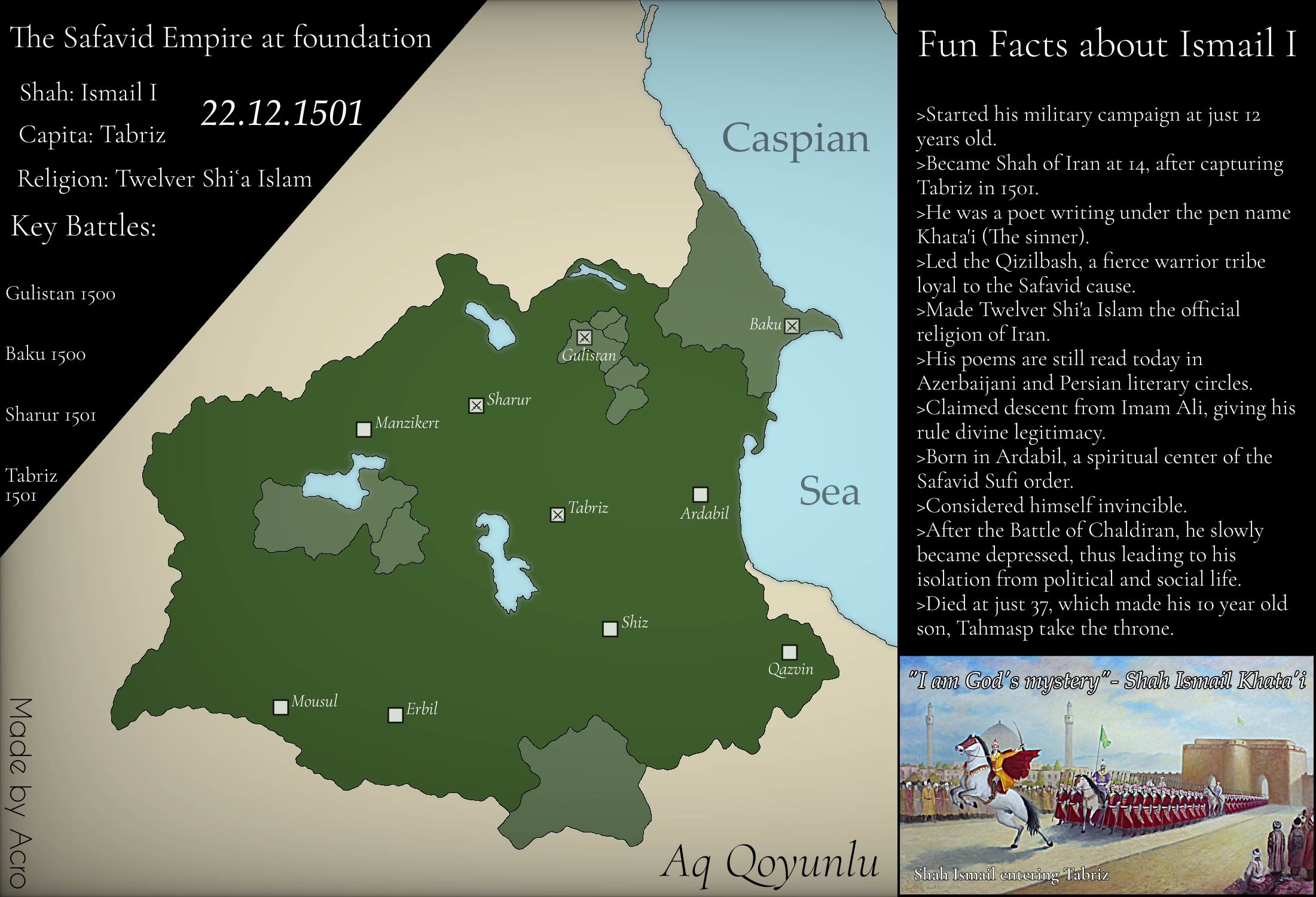Map of the Safavid Empire on December 22, 1501


Alex Cartwright
Senior Cartographer & GIS Specialist
Alex Cartwright is a renowned cartographer and geographic information systems specialist with over 15 years of experience in spatial analysis and data...
Geographic Analysis
What This Map Shows
This visualization presents the territorial extent of the Safavid Empire as of December 22, 1501. At this pivotal moment in history, the Safavid dynasty was on the verge of solidifying its power in Persia, marking a significant shift from the fragmented political landscape that characterized the region prior to its rise. The map outlines the empire's boundaries, highlighting key cities and regions that played crucial roles in its establishment and governance.
Deep Dive into the Safavid Empire
The Safavid Empire, founded by Shah Ismail I, rose to prominence in the early 16th century, effectively reuniting Iran under a centralized authority after years of disunity. Interestingly, the Safavids are often credited with establishing Twelver Shi'ism as the state religion, a move that not only defined the empire's identity but also set it apart from its Sunni neighbors, particularly the Ottomans to the west and the Mughals to the east.
One of the most fascinating aspects of the Safavid Empire is its cultural and artistic achievements. During this period, Persia experienced a renaissance in arts and architecture, with the establishment of Isfahan as the empire's capital. The map likely highlights cities such as Tabriz, which was significant as the initial capital and a cultural hub, and Qazvin, which later became the new capital after Isfahan.
Geographically, the Safavid Empire encompassed vast territories that included present-day Iran, parts of Azerbaijan, and stretches into modern-day Iraq and Afghanistan. The empire’s strategic location at the crossroads of trade routes fostered economic growth, allowing it to benefit from the Silk Road's rich commerce. Have you ever considered how geography influences trade? In this case, the Safavid Empire's location was pivotal in facilitating cultural exchanges and economic prosperity.
Additionally, the Safavid military innovations were noteworthy. The empire built a strong, centralized military that utilized gunpowder technology effectively, a significant factor that contributed to its expansion and defense against external threats. The map illustrates the territories gained through military campaigns and the intricate network of fortresses established to protect trade routes and cities.
Regional Analysis
Examining the Safavid Empire through a regional lens reveals the complexity of its territorial governance. For instance, the northern regions, such as Gilan and Mazandaran, were famous for their lush landscapes and agricultural output, crucial for supporting the empire’s population. In contrast, the arid regions of Kerman and Sistan faced challenges due to their harsh climates, influencing settlement patterns and economic activities.
Moreover, the cultural diversity within the empire was striking. The Safavid rule encompassed various ethnic groups, including Persians, Kurds, and Azeris. Each region brought its own customs and traditions, contributing to a rich tapestry of cultural life. Interestingly, the Safavid rulers promoted Persian culture and language, leading to a revival of Persian literature and art that had long-lasting effects on the region.
Comparing the regions, cities like Isfahan and Tabriz flourished as centers of trade and culture, while others, such as the more remote areas, lagged behind in development. The map not only shows political boundaries but also hints at the economic disparities that existed within the empire.
Significance and Impact
The significance of the Safavid Empire extends beyond its immediate territorial claims. It laid the groundwork for modern Iranian identity and profoundly influenced the political and religious landscape of the region. The establishment of Twelver Shi'ism created a distinct religious identity that continues to shape Iran's contemporary socio-political dynamics. Have you noticed how historical events often echo into the present? In this case, the Safavid legacy resonates through Iran's current governance and societal norms.
In terms of current trends, the Safavid Empire's emphasis on cultural development has left a lasting impact on art, architecture, and literature in Iran and beyond. The Empire's history is a reminder of how geography, culture, and politics intertwine to shape nations. As we look to the future, understanding this historical context is vital for grasping contemporary issues in the region, including geopolitical tensions and cultural exchanges. The Safavid Empire, as depicted in this map, serves as a crucial chapter in the narrative of Persian history, illustrating the complex interplay of power, culture, and territory.
Visualization Details
- Published
- September 20, 2025
- Views
- 68
Comments
Loading comments...